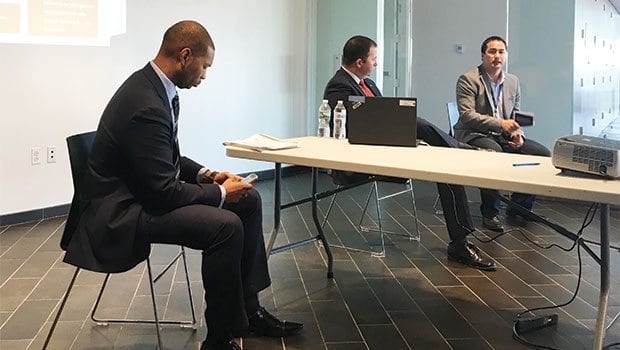
In 2015, Mayor Martin Walsh unveiled a 10-year $1 billion master plan for Boston Public Schools, BuildBPS, that his administration says will transform schools into more innovative, modern and exemplary learning models. Last weekend, BPS held a fall open house to showcase updated data, research and community input they have compiled over the last two years.
On the Web
BuildBPS is led by the City of Boston, the Boston School Committee, and the Boston Public Schools. Symmes Maini & McKee Associates (SMMA) serves as the lead planning and design firm, and Pinck & Co. serves as the project manager.
BPS Operations Chief John Hanlon presented this information at a public meeting during the open house in the Bruce C. Bolling Building, with BPS Superintendent Tommy Chang and City of Boston Education Chief Turahn Dorsey also present.
The $1 billion initiative will be financed with $730 million dollars from the city’s bond capital and $270 million invested by the Massachusetts School Building Authority (MSBA), according to Hanlon.
“The mayor wants to leverage our triple bond rating and obtain a quarter of a million dollars from MSBA,” said Dorsey.
The $1 billion will go towards new construction, expansions, renovations, reconfigurations, maintenance and repairs, technology infrastructure, classroom furniture, accreditation investments and schoolyard improvements.
Hanlon said more than $28 million of the budget has been used so far, for projects like Dearborn STEM Academy, Boston Arts Academy, Another Course to College and Mattapan Early Elementary School.
Last spring, 12 neighborhood workshops were held with a total of 450 people in attendance. At these workshops, 451 investment ideas were put forth by the public.
“It’s important for us, as a school district, to hear from people, the real stakeholders,” said Hanlon. After an attendee at last week’s meeting pointed out that 450 people might not be a fair representation of the entire student and parent community in Boston, Chang said that the team is working on having ongoing platforms for suggestions to be submitted by the public.
“We’re learning how to test ideas. This process is new for BPS,” added Dorsey. “We’re trying to find the right modality to reach everyone because there are barriers everywhere to each mode of communication.”
From the neighborhood workshops, the BuildBPS team learned that the majority of people cared about access to high quality schools in their neighborhoods, clear educational pathways from pre-kindergarten to graduation, fewer transitions between schools, modernizing buildings with technology, improving physical condition of buildings and increasing accessibility for students with disabilities.
Hanlon said that these ideas are now currently being reviewed by city and BPS officials with finances, equity, and the principles of the BuildBPS master plan in mind.
In November, a recap of themes brought up in the community meetings will be released, and stakeholders will meet in December. In January 2018, the next round of community engagement starts up again.
As shown in the BuildBPS Master Plan, the project’s team visited all of the Boston Public Schools’ buildings and rated each one based on four categories: building; site; learning environment effectiveness; and learning space effectiveness.
In addition, the capacity of each BPS building was measured and analyzed. According to the BuildBPS Master Plan, “Capacity raises a complex set of questions about how much space is available, and how that space may be appropriately used to serve students of particular ages, in various programs, for a wide range of uses.”
The way the buildings are being utilized today, capacity is at 69,100 seats, which includes extra empty classrooms and classrooms that are not full, according to the Master Plan. Through continued investments, BuildBPS plans to “move from the current capacity of today towards the educational capacity of tomorrow” with 55,500 seats, city officials say.
Hanlon stated that this doesn’t mean that schools will lose seats, but that the team is looking into reconfiguring grades or consolidating buildings and spaces to include additional spaces for enrichment programs, specialty subjects and counseling.
Unease and distrust rose among the public last year when emails obtained by the parent group Quality Education for Every Student showed BPS officials, staff, and the mayor discussing how an outside consultant report, the McKinsey Report, could be used to drive BPS Policy. The report included a recommendation to close as many as 50 school buildings.
Mayor Walsh responded to QUEST’s assertion that the email communications proved lack of transparency with the public over school closings in an email to the Banner last June.
“While I appreciate the input of the McKinsey report, it is only a starting point for analysis, and I have made it clear that I am not comfortable with any proposal that would close schools until we complete our comprehensive facilities master plan,” his statement read.






